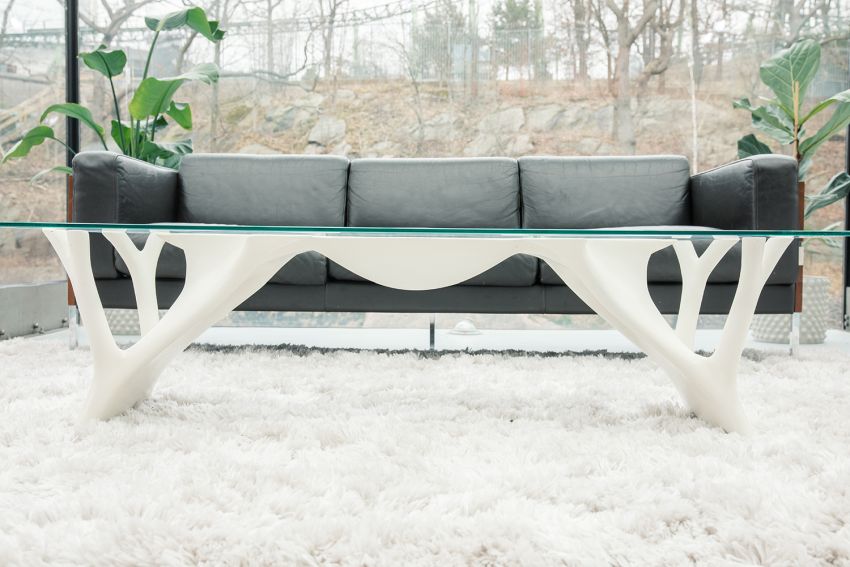When I first looked at the picture, I thought it to be an elegant coffee table made using Plaster of Paris because of the fine white powdery finish. Little did I realize, it is an amalgamation of wood fiber and recycled plastic; the two bio-composites that are the future of furniture design. Designed by Swedish creative studio Interesting Times Gang, the table called Aibio is touted as the first concept to be created together with AI and biomimetic generative design algorithms, and 3D-printed in wood-based materials.
“Our goal is to create a closed-loop for the material so that it can be redesigned and reused again and again,” Interesting Times Gang’s co-founder Alexander Westerlund told Homecrux. The company doesn’t offer much insight into how the manufacturing technology works but pushes on the design philosophy of sustainability and circular economy.
With an ultimate goal to keep everything within the material ecosystem, the table base is made of bio-composite, comprising 50 percent wood and 50 percent recycled plastic. The tabletop is made of tempered glass. Overall, the table looks elegant and stylish, and measures around 140 cm in length, 60 cm in breadth, and 40 cm in height.
Also Read: Minimalist Lip Coffee Table Features a Split Top for Storage
It is to be noted that every year, over 12 million tons of furniture ends up in waste streams in the EU. Only about 10 percent of it is recycled to make finished products again, the rest ends up in landfills, further contributing to land waste.
“With circular economy and sustainability in mind, the studio works with wood-based bio-composites, which adds ambiguity to the form and circularity to the finished result,” Alexander added. The benefit of the circular design is a closed loop where the Aibio coffee table can potentially be redesigned as a chair or be reborn as a vase.
Follow Homecrux on Google News!

